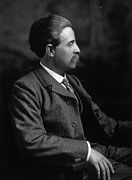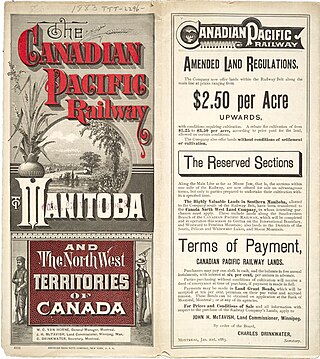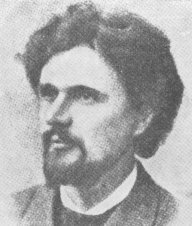A utopia typically describes an imaginary community or society that possesses highly desirable or near-perfect qualities for its members. It was coined by Sir Thomas More for his 1516 book Utopia, which describes a fictional island society in the New World.

The Biographical Dictionary of the Extreme Right Since 1890 is a reference book by Philip Rees, on leading people in the various far right movements since 1890. It contains entries for what the author regards as "the 500 major figures on the radical right, extreme right, and revolutionary right from 1890 to the present" . It was published, as a 418-page hardcover, in New York by Simon & Schuster in 1990 (ISBN 0-13-089301-3).

Sir Raymond Unwin was a prominent and influential English engineer, architect and town planner, with an emphasis on improvements in working class housing.
Finnish Canadians are Canadian citizens of Finnish ancestry or Finns who emigrated to and reside in Canada. In 2016, 143,645 Canadians claimed Finnish ancestry. Finns started coming to Canada in the early 1880s, and in much larger numbers in the early 20th century and well into the mid-20th century. Finnish immigration to Canada was often a direct result of economic depressions and wars, or in the aftermath of major conflicts like the Finnish Civil War. Canada was often chosen as a final destination because of the similarity in climate and natural conditions, while employment in logging or homesteading attracted landless farmers in the early 20th century. Migratory movements of Finns between Canada and the United States was very common as well.

The Baroque Revival, also known as Neo-Baroque, was an architectural style of the late 19th and early 20th centuries. The term is used to describe architecture and architectural sculptures which display important aspects of Baroque style, but are not of the original Baroque period. Elements of the Baroque architectural tradition were an essential part of the curriculum of the École des Beaux-Arts in Paris, the pre-eminent school of architecture in the second half of the 19th century, and are integral to the Beaux-Arts architecture it engendered both in France and abroad. An ebullient sense of European imperialism encouraged an official architecture to reflect it in Britain and France, and in Germany and Italy the Baroque Revival expressed pride in the new power of the unified state.

A block settlement is a particular type of land distribution which allows settlers with the same ethnicity to form small colonies. This settlement type was used throughout western Canada between the late 19th and early 20th centuries. Some were planned and others were spontaneously created by the settlers themselves. As a legacy of the block settlements, the three Prairie Provinces have several regions where ancestries other than British are the largest, unlike the norm in surrounding regions.
The Socialist Party of British Columbia (SPBC) was a provincial political party in British Columbia, Canada, from 1901 to 1905. In 1903, the SPBC won seats in the Legislative Assembly of British Columbia.

The Socialist Party of Oregon (SPO) is the name of three closely related organizations — an Oregon state affiliate of the Social Democratic Party of America established in 1897 and continuing into the 1950s, as well as the Oregon state affiliate of the Socialist Party USA from 1992 to 1999.

Johan Verner Weckman was a wrestler, who is the first Finnish Olympic gold medalist.

Matti Kurikka was a Finnish journalist, theosophist, and utopian socialist.
The Georgian Socialist-Federalist Revolutionary Party was a Georgian nationalist party, founded in April 1904. The party's program demanded the national autonomy of Georgia, within the framework of a Russian federal state, and advocated for a democratic socialist system. Mainly based in the rural areas, the party's membership was almost entirely drawn from the peasantry and the petty gentry. The political profile of the party had an appeal amongst moderately nationalist intellectuals, schoolteachers and students. The party strived that agricultural issues not be decided by central authorities, but by autonomous national institutions. The party published the periodical Sakartvelo.
The Nordic diaspora may refer to:
The Canadian Socialist League (CSL) was the first nationwide socialist organization founded in Canada. It originated in Montreal in 1898, but was strongest in Ontario and British Columbia. The leaders espoused a moderate socialism based on Christian reform principles. Members of the league formed provincial socialist parties. In 1905 these parties merged into the Socialist Party of Canada (SPC).
This page is based on this
Wikipedia article Text is available under the
CC BY-SA 4.0 license; additional terms may apply.
Images, videos and audio are available under their respective licenses.







